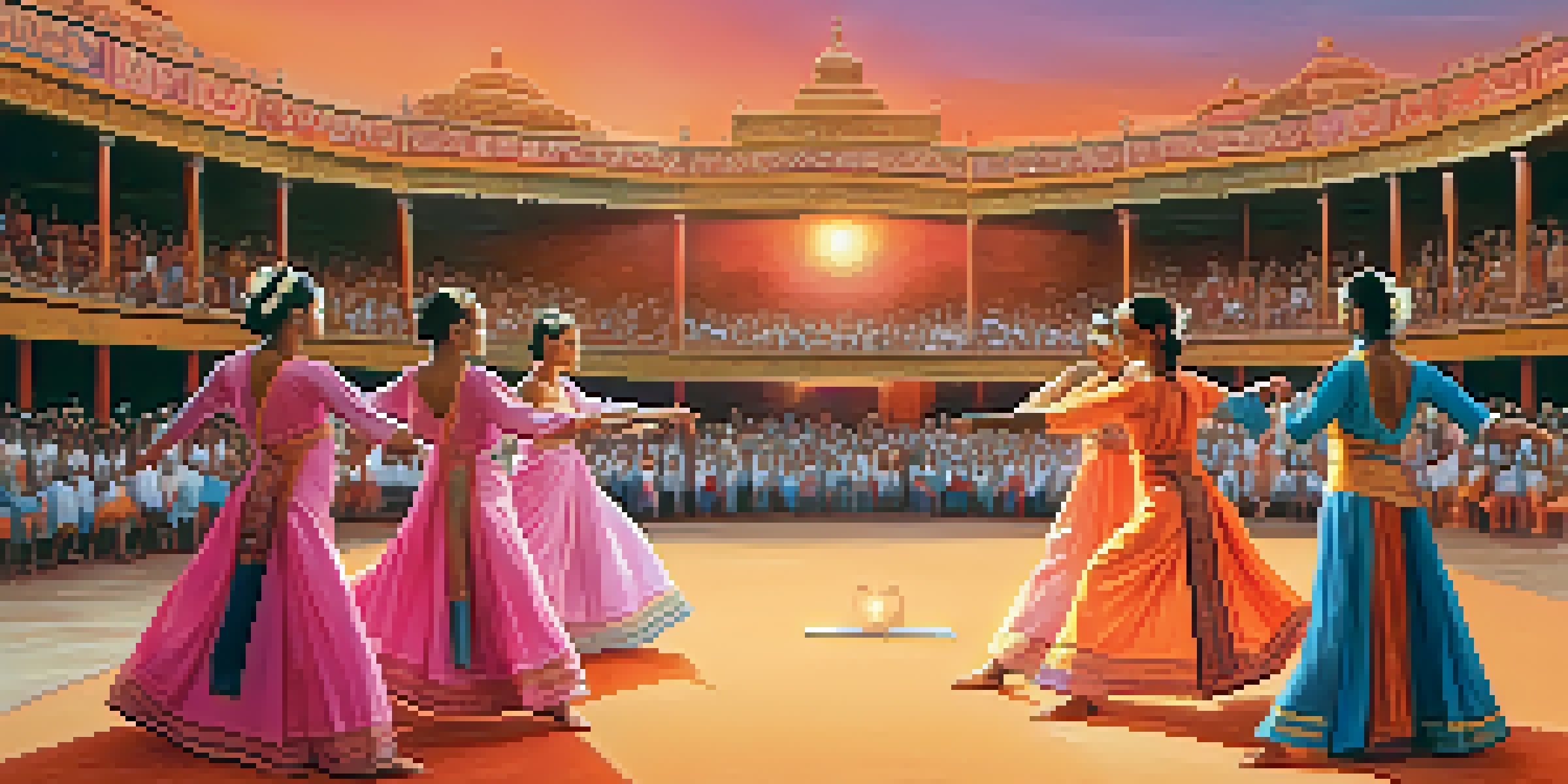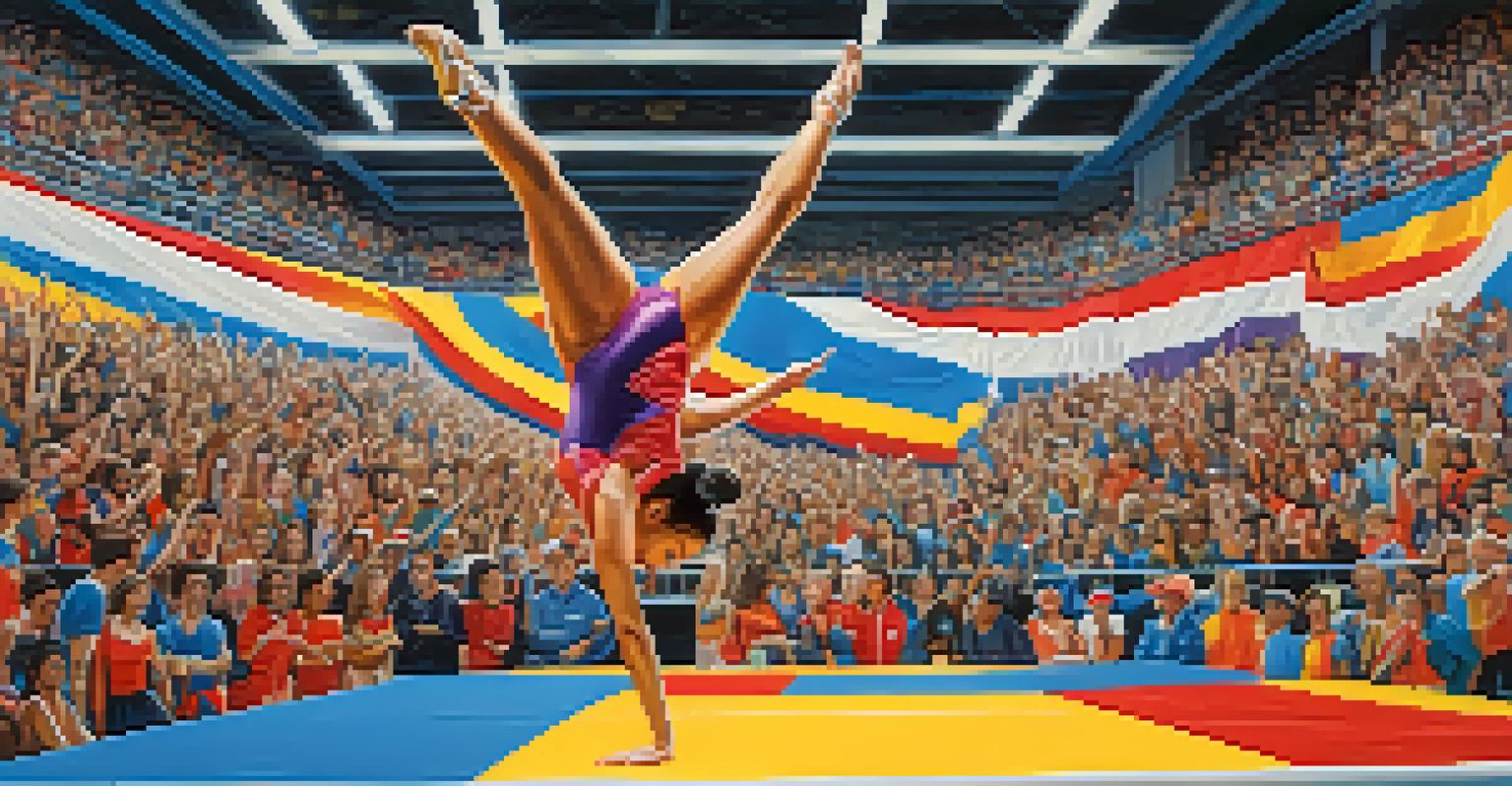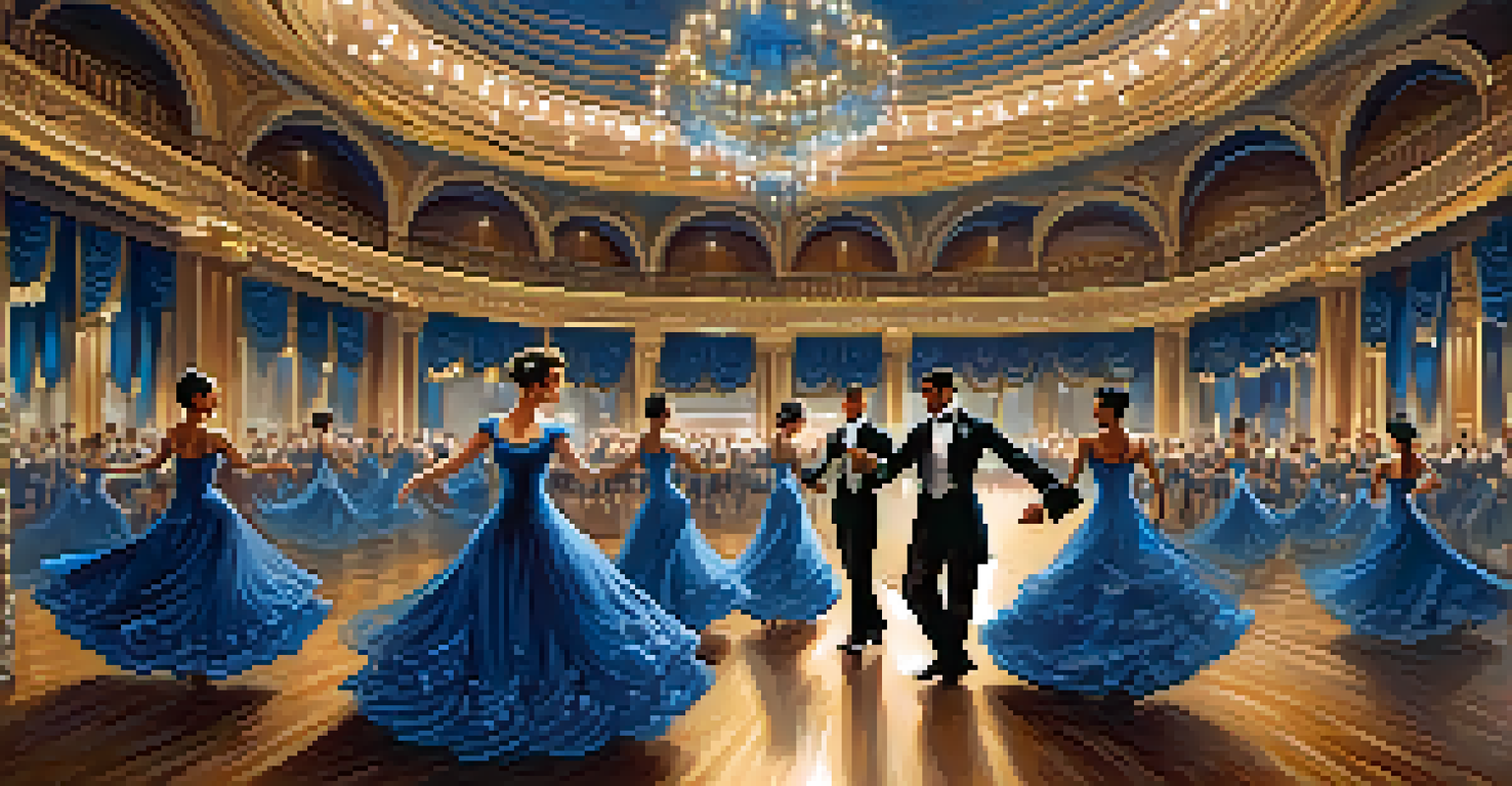Cultural Influences of Dance Styles in Sports Competitions

The Role of Cultural Heritage in Dance Styles
Cultural heritage plays a vital role in shaping various dance styles, influencing how athletes express themselves in sports. Each dance form, from ballet to salsa, carries a unique story that reflects the culture it originates from. This connection to heritage not only enriches the performance but also resonates with audiences who appreciate the cultural significance behind the movements.
Dance is the hidden language of the soul.
For instance, the incorporation of traditional African dance in cheerleading competitions highlights the vibrancy and energy of the culture. Similarly, the use of classical Indian dance in figure skating can transport viewers to another world, showcasing a narrative steeped in tradition. These cultural elements enhance the aesthetic appeal of sports, making them more engaging.
As athletes embrace their cultural roots, they create a sense of identity and belonging, both for themselves and their communities. This blend of sport and cultural expression fosters a deeper appreciation for the diverse backgrounds of competitors, ultimately enriching the sporting experience for all.
Influence of Globalization on Dance Styles in Sports
Globalization has led to the fusion of various dance styles, creating a melting pot of influences in sports competitions. Athletes are now blending elements from different cultures, resulting in innovative performances that captivate audiences. For example, the rise of hip-hop in gymnastics routines has transformed traditional approaches, introducing fresh energy and creativity.

Moreover, international competitions provide a platform for athletes to showcase their unique styles, drawing inspiration from their global counterparts. This cross-cultural exchange not only elevates the quality of performances but also encourages athletes to experiment with new techniques and choreography. It’s a beautiful representation of how sport can connect people from diverse backgrounds.
Cultural Heritage Shapes Dance Styles
Cultural heritage enriches dance forms, allowing athletes to express their identity and connect with audiences through powerful narratives.
However, this blending of styles can also lead to debates about cultural appropriation versus appreciation. As we witness these interactions, it’s crucial for athletes and choreographers to honor the origins of the dance styles they incorporate, ensuring that they respect the cultures they borrow from while celebrating diversity in sports.
Regional Dance Styles and Their Impact on Sports
Regional dance styles bring a unique flavor to sports competitions, reflecting the traditions and history of specific areas. For example, the lively jigs and reels from Irish dance have made their way into various athletic performances, adding rhythm and style. These regional influences often create a distinct identity for athletes, allowing them to stand out in competitions.
Culture is not just an accessory; it is necessary for the health of the body politic.
Additionally, sports like ballroom dancing and salsa have been heavily influenced by their cultural roots, showcasing the elegance and passion typical of their regions. Athletes often find that incorporating these regional elements enhances their routines and helps convey a narrative that resonates with judges and spectators alike.
As athletes embrace their regional dance styles, they not only honor their heritage but also educate audiences about the richness of their culture. This connection fosters a deeper appreciation for the diversity in sports competitions, showcasing how dance can serve as a bridge between different communities.
Dance Styles as a Form of Expression in Sports
Dance serves as a powerful form of expression, allowing athletes to convey emotions and tell stories through movement. In sports competitions, this expressive quality can be crucial for captivating audiences and judges alike. For example, a figure skater might use the fluidity of contemporary dance to communicate a theme of love or loss, drawing spectators into their performance.
The emotional connection established through dance can enhance the overall impact of a competition, making it more memorable for viewers. When athletes infuse their routines with personal stories or cultural narratives, it creates a deeper bond with the audience, transforming a simple performance into a shared experience.
Globalization Blends Dance Influences
The fusion of diverse dance styles through globalization creates innovative performances, while also raising awareness of cultural appropriation.
Furthermore, the emotional depth brought by dance can serve as a source of inspiration for athletes, pushing them to elevate their performances. By connecting with their roots and expressing themselves authentically, athletes can find new dimensions in their routines, ultimately enhancing their competitive edge.
Judging Criteria and Cultural Considerations
Judging criteria in sports competitions often take cultural influences into account, but the interpretation can vary widely. Different styles may highlight unique skills or techniques that resonate with specific cultural traditions, impacting how judges evaluate performances. For example, a routine incorporating traditional Maori dance might be judged with a different lens than a contemporary hip-hop piece.
As judges strive to appreciate the diversity of dance styles, they must navigate the balance between technical skill and cultural authenticity. This can lead to challenges, especially when cultural nuances are not fully understood. Establishing clear guidelines that honor these differences is essential for fair evaluations and promoting inclusivity in competitions.
Moreover, the ongoing dialogue around cultural considerations in judging is crucial for the evolution of sports. By recognizing and valuing the cultural contexts behind various dance styles, judges can create a more equitable platform for all athletes, allowing their unique expressions to shine through in competitions.
The Evolution of Dance Styles in Competitive Sports
Dance styles in competitive sports have evolved dramatically over the years, influenced by cultural shifts, societal changes, and the global landscape. As new styles emerge and gain popularity, athletes are increasingly experimenting with innovative choreography that pushes the boundaries of traditional performances. This evolution not only keeps competitions fresh and exciting but also reflects the dynamic nature of culture itself.
For instance, the rise of street dance styles, such as breakdancing, has sparked new interest and opportunities within competitive sports. As these styles gain recognition, they challenge the norms of traditional dance, allowing athletes to showcase their creativity and individuality. This adaptability is a testament to the evolving nature of sports and the influence of culture on performance.
Evolution of Dance in Sports
Dance styles in competitive sports are continuously evolving, reflecting cultural shifts and encouraging athletes to experiment with creativity.
As we look to the future, it’s clear that the evolution of dance styles will continue to shape sports competitions. By embracing change and encouraging diversity, athletes can contribute to a richer tapestry of cultural expression in the sporting world.
The Future of Dance Styles in Sports Competitions
The future of dance styles in sports competitions is bright, with ongoing innovations and cultural exchanges paving the way for exciting developments. As athletes continue to explore and incorporate diverse influences, we can expect to see even more unique and compelling performances. This evolution will likely inspire future generations to embrace their cultural heritage while pushing artistic boundaries.
Additionally, the increasing globalization of sports means that different styles will continue to intermingle, creating new hybrid forms that captivate audiences worldwide. For example, the fusion of ballet with modern dance techniques could lead to groundbreaking performances that challenge traditional norms. This ongoing exploration of dance styles underscores the importance of creativity and adaptability in sports.

Ultimately, the future of dance styles in sports competitions reflects a commitment to inclusivity, diversity, and cultural appreciation. As we celebrate the rich tapestry of dance, we honor the athletes who bring these stories to life, inspiring others to express themselves through movement and connect with cultures around the globe.